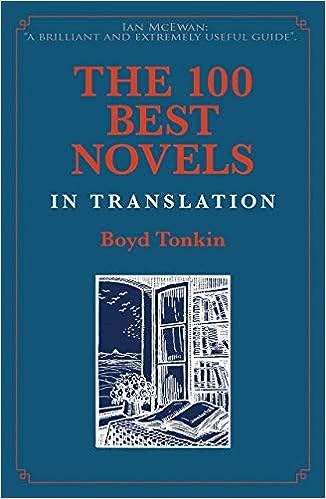Featured image found on Adobe Stock. Fully licensed under the education license. Created by Aramyan.
The women in translation movement.
The Women in Translation movement was launched to try and address the gender disparity in translated fiction whereby ‘less than 31% of translation into English are written by women’, and it ‘is a global effort focused on the idea that women who write in languages other than English deserve to be widely read and appreciated.’1 Although Women in Translation (or WiT) has seen rising success in promoting attention to this issue there are various structural processes and attitudes underpinning the issue. Whilst the following are not the only reasons, there are three interconnected contributing reasons at play.
Firstly, publishers’ attitudes, perceptions, and practices; secondly, translators and their perceptions of the issue; thirdly, literary canon(s) and review coverage. We must also acknowledge that foreign-language literary prizes play a role in the representation of women authors in translation and can be thought of as fourth factor. Investigating contributing reasons is not to excuse the issue of a gender bias against WiT globally. Understanding the links between these factors is key. Whilst there have been recent efforts to redress this imbalance (such as independent publishing house And Other Stories ‘Year of Publishing Women’ in 2018 and the Warwick Prize for Women in Translation, launched in 2017), underrepresentation of WiT remains an ongoing concern. Investigating the reasons for bias can equip publishers and translators to develop solutions.
To analyse and counter the bias against WiT, it is important to distinguish between publishers as organisations and editors as individuals working for publishers. Firstly, editors are human selectors of WiT. Editors have gendered reading habits, as For Book’s Sake founder, Jane Bradley comments:
“Men will only read men, whereas women read anything’ and the pragmatism of ‘editors or magazine publishers… (who know) …if they feature women authors, they’re cutting off half their audience whereas if they feature men they can reach everyone.” (Literary Translation Centre 2014)
Indeed, after analysing 40,000 (half male/half female) members, a Goodreads survey found that they leaned almost entirely towards selecting books by writers of their own sex. However, as Joanna Walsh states, it is important to note that the top Goodreads books include many crime, YA, and other titles less likely to be ones reviewed in publications covered by the VIDA count (Flood 2014). Jean Oggins’ (2014) research on role congruity theory – individuals perceive themselves and others as more competent in roles that are congruent with gender roles – and social identity theory – people hold more positive views of those in their own group for example, their own gender – helped her write about the underrepresentation of women in US-American anthologies. A publisher’s size also impacts how many women they publish. Ritu Menon, co-founder of feminist press Kali for women in India claims that:
“You will find in most of the publishing houses especially in the global north – the decision-making is in the hands of the male…yes, there are present (women) in editorial, but editorial these days is subordinate to finance and marketing.” (Menon 2018)
Editors are early readers professionally and privately, as Thomas Franssen highlights: “all editors have had long histories of intensive childhood reading, editors tend to have longer/deeper relationships with literary fiction in their personal histories” (Franssen 2015, 103). There is a perceived notion editors have that men are more prolific writers than women and men write longer books (which win more prizes). However, as translator Sophie Lewis states:
“Women sometimes tend to write shorter works, so novellas or short stories, especially the latter. For practical reasons, e.g., childcare, they have less time for sustained periods of intensive work. Historically, short story collections and shorter works altogether are underrepresented in British publishing.” (Lewis 2019)2
Image above taken from Adobe Stock under the Education License created by Deagreez.
The UK seems to be seeing the rise of the translator as publisher in the UK, yet editors do sometimes let their perceptions seep into their editorial choices.
Translator Daniel Hahn (2019)3 notes that he is offered more men to translate than women and suggests that this may be based on the kind of things offered to him by publishers wanting acclaimed translators and thinking of men translators when publishing translated books by men, but not making such an “accommodation” when asking female translators to translate male authors. Besides this, there is the economic practicality that most publishers publishing translations try to retain the services of the same translators they have already trusted for titles by a particular author. Katy Derbyshire, WiT activist and literary translator from German, found that despite there being more women editors than men in Germany, there is a clear pattern in disparity between literary and genre fiction being written by women in Germany. With more women writing genre fiction than literary and with added prejudices against genre fiction, German editors are putting fewer women forwards for translation (Derbyshire 2016).
Secondly, we come to publishers as companies that do not all access translations via the same channels. Bigger publishers do not rely on translators as much as smaller independent publishers do. In an article for Northern Soul, journalist Emma Yates-Badley spoke with And Other Stories’ MD Stefan Tobler about their 2018 year of publishing women and he explained:
“Naturally we trust the authors we already have and because, like the publishing industry in general, we were publishing more men in translation, some of those men were then recommending other men.” (Yates-Badley 2018)

Image above taken from Adobe Stock. Fully licensed under Education License and created by SecondSide.
There does seem to be more rapport between smaller publishers and translators than there might be between translators and bigger publishers. Deborah Smith, Han Kang’s translator and publisher at Tilted Axis, suspects the real reason for finding more women than men was that:
“As a small, not-for-profit publisher, books were coming to us through a very different channel than they do for the big commercial houses. That channel was translators. Most of what gets published in Asia and Africa won’t have an international agent, meaning translators who work with these languages frequently have to act as scouts, pitching work directly to publishers.” (Smith 2015)
Another organisational issue for publishers is elective affinity; according to Johan Heilbron and Nicky Van Es (2015, 301):
“Small publishing houses tend to be focused more on foreign publishers, specifically, on those publishers that share a similar literary identity underscored by distinctly non-commercial aims.”
This can be problematic because any latent biases or attitudinal problems in source countries will either just be cast aside by publishers who need to stick with foreign publishers like them, or even worse, the bias remains unchallenged as it is not acknowledged widely enough throughout the network to be remediated. The nodes of the translation machine are not all flashing red about the bias against WiT.
How does all this affect translators. Translator Daniel Hahn, himself a great advocate for WiT, pointed out the 2:1 ratio in favour of men over women in translated fiction in the UK and how that relates to the mechanics of how translations are found/talked about which we saw earlier differs between publishers (Hahn as panellist, The British Academy 2017). There is also economic reality, which translator Lucy Greaves (2014) touches on,
“I still have to pay the bills, and can’t just say no if two publishers asked me to translate novels by men.”
The above highlights how translators are approached slightly differently by publishers because of their genders and assumed reader preferences. Men translators rising in numbers and more men authors winning prizes and getting review coverage than women authors show us how entrenched gendered reading patterns can influence male translators to pitch yet another book by a man, or how foreign publishers hoping for a prize will likely choose the story about a man written by a man. Translators themselves are great advocates for gender parity and their relationships to publishing houses and to the ears of dedicated editors is paramount in reversing the tide of the bias facing WiT.

Let us briefly look at the ways the canon(s), both universal and national, can and should include more WiT. Polish academic Piotr Wilczek (2012) has written about the close relations between canon creation and the process of translation, as well as the existence of states when considering canons, how the political aspects of canonization should never be forgotten. These differences in national canons surface when we try to look at universal canon(s): in 2019 Meytal Radzinski (the founder of WiT Month) crowd-sourced a proposed canon of 100 best WiT in response to Boyd Tonkin’s 100 Best Novels in Translation (2018),
which was dominated by male-authored texts, but Radzinski’s results are, she acknowledges, very tilted toward more recent works. Interestingly, Sapiro has commented on canonicity arguing that “following its globalization from the 1960’s onward, we thus observe a feminization of the world literary canon, parallel to the inclusion of postcolonial authors” (Sapiro 2016, 92). In theory, this would mean more WiT rather than less, but this has not transpired, which is why it is paramount to develop national canons that include more women authors as the literary reception of women authors on reading lists and curriculums in their own countries impacts so much on how/if they’re translated into English. Irish author Anne Enright, writing for the London Review of Books, notes a similarity between the translator gender issue and the pattern of gender interaction when it comes to literary reviews and who gets asked to review whom, stating that ‘work by men is also read and discussed by female critics; only one side of the equation is weak: the lack of engagement with women’s work by men’ (Enright 2017).
She also calls in a very powerful and urgent way on men needing to analyse these deeply held biases within themselves, suggesting that they also need to be more vocal about which women writers influenced them and be more questioning of the androcentric canon which shapes these biases to a certain extent. Just as books read by different readers evolve in their meaning, so readers evolve in their reading practices.

Image sourced from Adobe Stock Fully licensed under Education License, created by Lealnard
The bias against WiT needs to be actively challenged and this redressing of gender parity in translated literature gains momentum with each new woman in translation published in English, with each publisher and translator actively seeking out WiT, and with each reader embracing this voyage of discovery.
Written by Oisín Harris, Student Information Officer.
Our thanks go to Oisín, Student Information Officer at Canterbury Christ Church University for allowing us to publish on the Library Blog as part of Women in Translation campaign.
Featured image found on Adobe Stock. Fully licensed under the education license. Created by Aramyan.
References
Derbyshire, Katy (2016) ‘Women in translation: why does it matter?’ Free Word, 23 February. Retrieved from https://www.freewordcentre.com/blog/2016/02/k-derbyshire (link no longer available as https://freeword.org has discontinued its online magazine)
Enright, Anne (2017) ‘Diary Entry written for the London Review of Books’. London Review of Books, vol 39(18). Available at: https://www.lrb.co.uk/v39/n18/anne-enright/diary
Flood, Alison (2014) ‘Readers prefer authors of their own sex, survey finds’. The Guardian, 25 November. Available at: https://www.theguardian.com/books/2014/nov/25/readers-prefer-authors-own-sex-goodreads-survey
Franssen, Thomas P. (2015) How books travel: Translation flows and practices of Dutch acquiring editors and New York literary scouts, 1980-2009 (Unpublished PhD thesis). Amsterdam Institute for Social Science Research, Amsterdam. Available at https://pure.uva.nl/ws/files/2415678/156492_Franssen_thesis_met_cover.pdf
Greaves, Lucy (2014) ‘Translating Women’. Free Word, 19th June. Retrieved from: https://www.freewordcentre.com/explore/translating-women (link no longer available as https://freeword.org has discontinued its online magazine)
Heilbron, Johan and van Es, Nicky (2015) ‘Fiction from the Periphery: How Dutch Writers enter the Field of English-Language Literature’. Cultural Sociology, 9(3): 296-319.
Literary Translation Centre (2014) ‘Where are the Women in Translation?’ panel at the London Book Fair. Available at: https://www.youtube.com/watch?v=L7achA_NAhY (Accessed: 15 July 2017)
Menon, Ritu (2018) ‘Interview with Rebecca Bowers’. LSE Blog March 6. Available at: https://blogs.lse.ac.uk/lsereviewofbooks/2018/03/20/interview-a-qa-with-ritu-menon-co-founder-of-feminist-press-kali-for-women/
Oggins, Jean (2014). ‘Underrepresentation of Women Writers in Best American Anthologies: The Role of Writing Genre and Editor Gender’. Sex Roles, 71: 182-195.
Radzinski, Meytal (2019) ‘The 100 Best Books by Women Writers in Translation.’ Bibliobio.blogspot.com. August 26. Available at: http://biblibio.blogspot.com/2019/08/witmonth-day-26-100-best-books-by-women.html
Sapiro, Gisele (2016) ‘How Do Literary Works Cross Borders (or Not)? A Sociological Approach to World Literature.’ Journal of World Literature, 1(1): 81-96.
Smith, Deborah (2015) ‘Tilted Axis Press on publishing women’. And Other Stories website. Available at: https://www.andotherstories.org/2015/07/28/tilted-axis-press-on-publishing-women/
The British Academy. (2017) ‘In Celebration of Translation’. Available at: https://www.thebritishacademy.ac.uk/events/celebration-translation
Tonkin, Boyd (2018) The 100 Best Novels in Translation. Galileo Publishing, Cambridge UK.
Wilczek, Piotr (2012) ‘The Literary Canon and Translation Polish Culture as a Case Study. The Sarmatian Review, September, XXXII(3): 1687-1692.
Yates-Badley, Emma (2018) ‘What became of the Year of Publishing Women? Stefan Tobler from And Other Stories talks to Northern Soul’. Northern Soul. September 1 Available at: https://www.northernsoul.me.uk/the-year-of-publishing-women-writers-and-other-stories/
 Library
Library Vicky Mason
Vicky Mason 2052
2052



